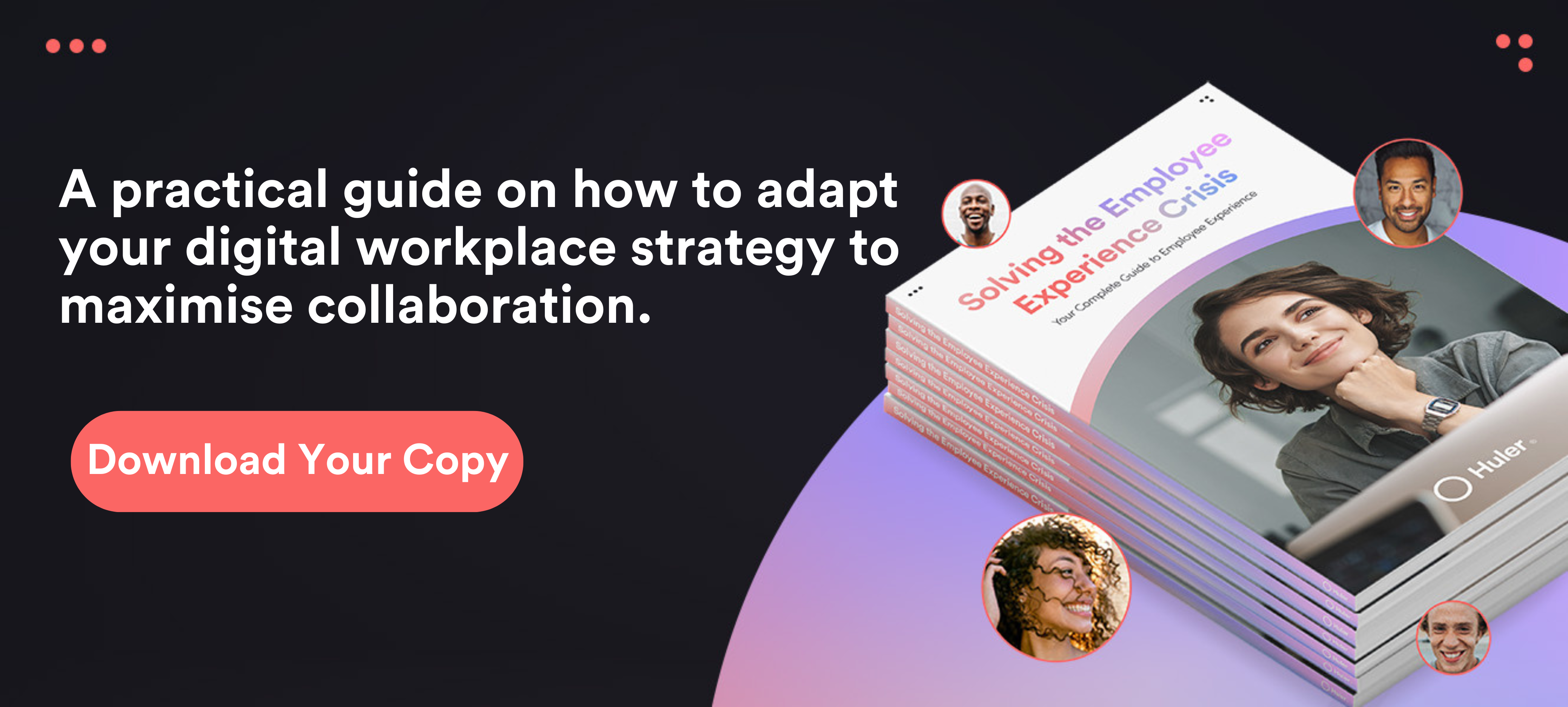Frontline workers are the heartbeat of a successful business. Yet, for many companies, these critical employees remain distant, disengaged, and often out of the loop.
Studies show a shocking 78% of frontline workers feel disconnected from their company’s leadership, with only 55% having access to a company email.
The are big consequences to neglecting your frontline workers. High turnover, disengagement and plummeting productivity are just some of the results of a disengaged frontline.
It’s time to bridge the gap and unlock their full potential.
Reignite your communication strategies
Important updates, company news, or company changes are often late to trickle down to the frontline, or sometimes not at all. This leaves them uninformed, confused, and unable to make informed decisions or contribute effectively.
Similarly, frontline workers often have needs and concerns that often go unheard. Without communication tailored to their needs, these needs remain unmet, leading to high levels of dissatisfaction.
Frontline employees expect information on:
- Your company’s vision and goals: Your frontline teams want to understand how their work fits into the bigger picture and feel connected to the company’s mission.
- Recognition and appreciation: With 59% of frontline workers saying they rarely or never receive recognition for their work, companies need to do better. Highlight their successes to the wider business, and celebrate individual and team achievements at regular intervals, don’t leave until the end of the year.
- Clear and timely updates: Keep them informed about important decisions just as much as your desk-based employees. They want to know about changes and company news at the same time as the rest of the business. Be sure to use language they understand and avoid jargon.
- Encourage upward feedback: Create avenues for the voices of your frontline to be heard. Use anonymous surveys, focus groups, or suggestion boxes to gather their insights and concerns. Act on their feedback to show they’re valued and their input matters.
- Provide accessible support and resources: Provide the necessary tools, training and resources they need to excel in their roles at every stage of their journey. Show them that you’re invested in their success and well-being and make things as easy as possible. Even if that’s creating a collection of onboarding materials that they can access via a link on their phone.
Embrace new channels
Traditional communication channels like email often miss frontline workers who may not have access to regular computers. This creates a sense of isolation and exclusion, making them feel like they’re not part of the bigger picture.
Use channels that your frontline workers use, in a way that works for them:
- Mobile-friendly platforms: Email might not be accessible, so utilise mobile-friendly apps, internal social media platforms or even SMS updates.
- Short, bite-sized content: Keep messages concise and to the point. Break down complex information about functions they are unfamiliar with, into digestible chunks.
- Visual communication: Use visuals like infographics, videos and pictures to communicate complex information effectively.
- Personalised communication: Segment your communications based on toles, interests and locations. Tailor content to resonate with their specific needs and challenges. There’s lots of mobile-friendly tools that make it easy for you to audience-manage your communications.
- Interactive communication: Encourage two-way conversations through polls, surveys and Q&A sessions. Make them feel as though their voice matters.
Take the time to really understand what your employees want to hear about, when and how. This will not only boost morale and engagement but also boost your business success. After all, companies with an engaged frontline, experience a 14% increase in profit margin and 10% higher customer ratings.
Invest in their development
Companies with engaged, well-trained employees see up to 21% higher profitability, and 21% lower turnover rates. But neglecting to develop your frontline and provide development opportunities is essentially just like leaving cash on the table.
But how do you unlock these benefits when this group of talent is typically hard to reach?
Well, it’s all about making L&D accessible and engaging for your frontline workers, who often have busy schedules and limited traditional learning time.
For example:
- Microlearning: Bite-sized learning modules delivered by mobile apps or short videos can fit seamlessly into your employee’s day, helping to keep them engaged and motivated. For example, Walmart use microlearning modules on mobile devices to train cashiers on new products and policies.
- Gamification: Turn learning into a fun challenge with points, badges, and leaderboards. This boosts engagement and knowledge retention.
- Peer-to-peer learning: Encourage knowledge sharing between experienced employees to create a sense of community and leverage the vast knowledge within your frontline team. Starbucks do this really well through their peer-to-peer barista coaching program.
- On-the-job training: Integrate learning into their daily tasks through coaching, shadowing, and mentorship programs. This makes learning practical and immediately accessible and applicable.
- Clear career development paths: Show your frontline what a future with your company will look like. Outline clear career progression opportunities and provide resources to help them achieve their goals.
Investing in an accessible, relevant frontline L&D program isn’t just about training, it’s about building a more knowledgeable, empowered, and profitable workforce.
It’s a win-win – your employees feel valued and grow their skills, whilst your business reaps the rewards and benefits of increased sales, lower costs, and improved customer experience.
Foster recognition and connection
Recognition and reward for your frontline needs to go beyond a simple pat on the back. Truly recognising and celebrating your frontline will boost your bottom line. Why? Because companies with effective recognition programs see a 53% increase in customer satisfaction; because when employees feel valued, they go the extra mile. That then translated to happier customers, higher loyalty, and ultimately, more revenue.
Whilst salary and benefits are important, frontline workers often crave more than just financial rewards. In fact, a report by Deloitte found that 58% of frontline workers prefer informal recognition like ‘thank yous’ and public shout-outs to monetary incentives. It’s the human touch that truly resonates.
Consider:
- Micro-rewards and peer-to-peer recognition: Celebrate small wins and daily achievements. Implement micro-rewards programs or encourage peers to acknowledge each other’s contributions.
- Technology: It’s important that achievements are celebrated wider than just their colleagues on the frontline, but to the wider organisation. Use tools to share a public high-five for all to see.
- Leadership visibility: If the undercover boss taught us anything, it’s that visibility is crucial. Consider regular visits, town halls, and open-door policies make leadership more approachable and show your frontline that they’re not forgotten.
Unite your consumer experience with their employee experience
Is your brand all about friendly service and personalised solutions? Then your employee experience should reflect that too.
A study by PwC actually found that 73% of consumers expect brands to treat their employees well, so dissonance between your advertised values and how you treat your frontline heroes can damage your brand image and your customer’s trust.
But how do you create that consumer-grade experience for your frontline workers?
Start as you mean to go on and create a personalised, accessible, branded experience from recruitment, preboarding, onboarding right the way through to exit.
As we said earlier, create digital experiences that are accessible for your frontline to really make them feel valued and connected, ensuring you personalise the experience at every opportunity.
By mirroring our customer experience (CX) and your employee experience (EX), you create a ripple effect of positivity that reaches all corners of your business.
This might look like the microlearning modules we mentioned earlier, or peer-to-peer recognition platforms like HulerHub, personalised career development plans, or a unique onboarding collection that welcomes your new starter to the team.
Remember though, your frontline are the workers directly shaping customer perceptions so by investing in their employee experience, you’ll reap the rewards of long-term loyalty and dedication. Those happy employees then become brand ambassadors and deliver exceptional experiences that your customers will keep coming back for.
Getting Started
It can sometimes feel overwhelming by the endless strategies you can implement to reach your frontline, but remember, it’s sometimes the smallest step that has the biggest impact.
Don’t get lost in a sea of strategies and take it back to basics. Identify your core business priorities first.
Is it better communication, or streamlining access to resources? Once you know where you’re headed, chose a targeted solution.
HulerHub, for example, can help you better reach your frontline with audience-managed content via their mobile whilst sharing recognition – acting as a gateway to a happier, more engaged workforce.
So start small and then scale.






